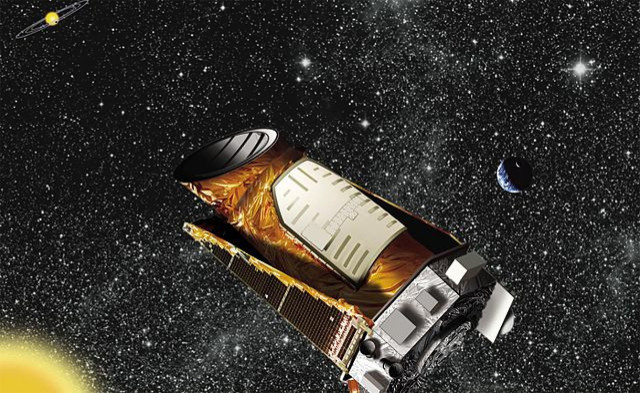Kepler Space Telescope Probably Won't Recover From Malfunction, May Be Forced Into Early Retirement

The Kepler space telescope is likely going into early retirement after experiencing mechanical problems. While the instrument may be good for some limited scientific use in the future, it'll probably not be able to search for alien worlds with the degree of freedom it once had.
On May 12, Kepler tilted unexpectedly and entered safe mode. NASA hasn’t been able to take the spacecraft out of safe mode, and further investigation has shown for the second time one of the four gyroscopic reaction wheels that helps hold Kepler in a precise position has failed. Another wheel failed in July 2012.
Now, NASA engineers have managed to get the wheels turning again, but it’s not going all that smoothly. One of the wheels, which is suspected to be the more seriously damaged of the two, only spun in one direction.
"It's not going to go back to its original mission; it's going to be something less than that," Kepler deputy project manager Charlie Sobeck told Space.com. "But how much less, and how much usefulness it'll have — it's really still very much up in the air."
Kepler looks for alien worlds by searching for the flickers of starlight. A planet passing across the face of a star causes it to dim ever-so-slightly, and the telescope picks up these subtle variations in light. With this technique, Kepler has found 2,730 planet candidates and 132 confirmed exoplanets as of January.
But to zero in on the light of distant stars, Kepler has to be pointed very precisely. Friction generated by the faulty reaction wheels could vibrate the telescope enough to interfere with its positioning. And though the wheels are spinning again, the friction analysis doesn’t bring good news.
According to Sobeck, both of the malfunctioning wheels are showing “substantially” higher friction than normal. There’s little likelihood that that friction will lessen, he told Space.com.
Kepler blasted off from Earth in 2009 and entered an “Earth-trailing” orbit around the sun. That puts it millions of miles away from us, so it’s not feasible to send astronauts out to make repairs, as NASA did with the Hubble space telescope. Kepler’s primary mission phase ended in 2012, but NASA extended the spacecraft’s term of duty until at least 2016.
The telescope may still be able to make more contributions to science, even in its current state. Some planetary candidates still need to be confirmed as exoplanets, and scientists know when those objects are scheduled to make a “transit” or pass across the face of their home star.
"We might be able to schedule a day or two days of precise pointing during that period and catch the next transit, and improve our knowledge of the planetary systems — maybe determine the mass of those systems, things like that,” Sobeck said. “It's not clear that planet hunting per se is off the table -- it's just a different style of hunting."
© Copyright IBTimes 2024. All rights reserved.





















